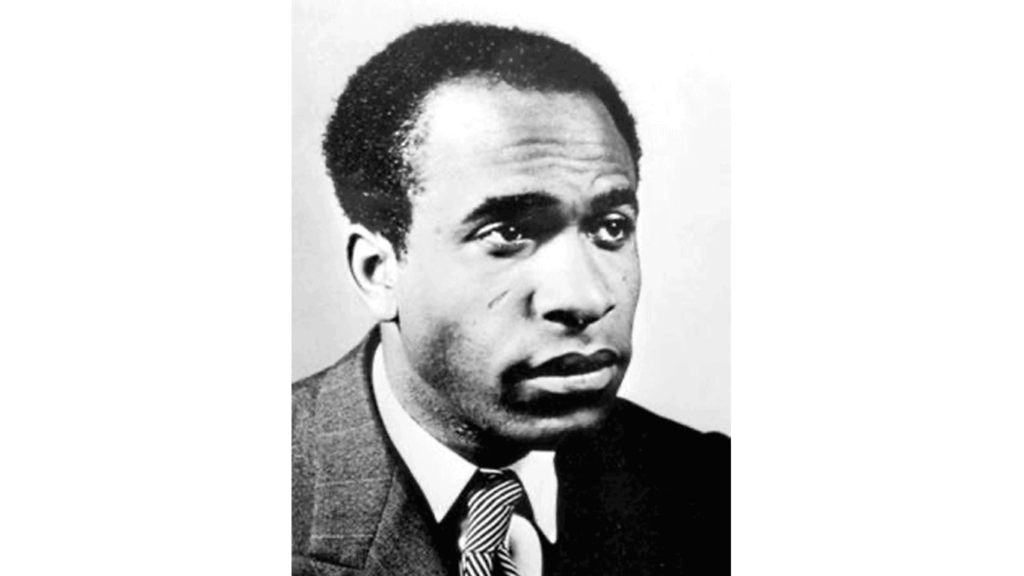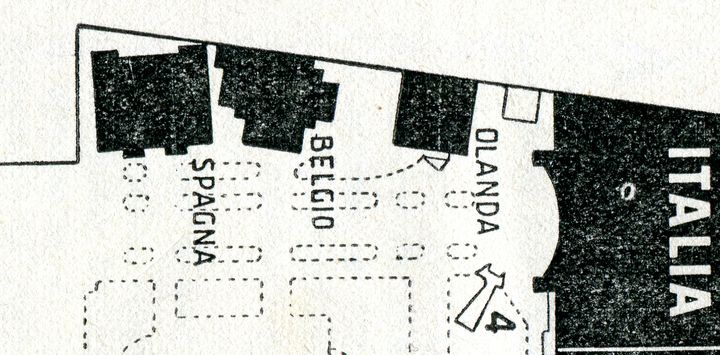Frantz Fanon (1925-1961)
Frantz Fanon’s Les Damnés de la Terre (1961), translated into English as The Wretched of the Earth, is an incontrovertible classic in the literature of anti-colonial insurgency. It has acted as a source of inspiration for myriad intellectuals in the Global South, but by no means exclusively such. Apart from furnishing a powerful lexicon for describing the colonial condition, the book has also been brandished as a kind of “handbook” on how best to resist, fight and overturn it. During the 1960s and 1970s, Iran was no exception in this regard. Fanon and his prominent role in the Algerian Revolution represented a lodestar for countless Iranian dissidents and revolutionaries. There has, however, been much confusion over the identity of The Wretched of the Earth’s first Persian translator, which has remained shrouded in uncertainty.
It has emerged as something of an urban legend that it was Ali Shariʿati (1933-1977), who first translated Fanon’s classic anti-colonial tome. But, in fact, the first translation of The Wretched of the Earth (Les Damnés de la Terre) was completed under the title of Duzakhiyan ruye zamin by Abolhasan Banisadr (b. 1933), who was a politically active student studying in Paris during the second half of the 1960s, with a handful of other activists in a secondary supporting role. He would ultimately emerge as the Islamic Republic of Iran’s first president from January 1980 until his untimely fall from power in June 1981. The translation was originally published in two parts by the Mosaddeq Press, which was sent to Iran and subsequently printed as a single volume, though the evidence of its having been split in two continues to mark the contents page and book’s pagination in some early pre-revolution editions [1].
According to Banisadr, the first part was published in 1966-7 and the second one, which I have been able to independently verify, in January 1969 [2]. The Mosaddeq Press was established by Banisadr and Hasan Habibi (1937-2013), along with two fellow activists, Engineer Houshmand and Dr. Kargosha in Hamburg [3], with the objective of publishing the writings of the much-admired former prime minister, Mohammad Mosaddeq, who was overthrown by a CIA-MI6 orchestrated coup in 1953. It also sought to keep the national movement alive and publish literature which they believed would serve the struggle against the Shah and U.S. neo-colonialism.
Hitherto, it has been unclear who exactly translated which parts of Fanon’s The Wretched of the Earth. In his seminal biography of Shariʿati, Ali Rahnema, contends that it was the combined effort of Shariʿati, along with his friends, “Asgari, Harati and Alavi” [4]. The veteran political activist and publisher, Lotfollah Meisami, has claimed that Hasan Habibi translated the book, except for Sartre’s preface which he attributes to Shariʿati [5]. In an article discussing the various translations of Fanon in Persian, Farzaneh Farahzad, speculates on Shariʿati’s possible role as either translator or partial translator. She also mentions a 1979 edition of The Wretched of the Earth attributed to Abolhasan Banisadr but was unable to provide any solid evidence regarding who exactly translated the text and when [6]. She dates the earliest translation of Fanon to 1970, namely, Fanon’s Toward the African Revolution (translated by Mohammad Amir Kardan) and dates the first translation of The Wretched of the Earth, to 1971. Unfortunately, the article misses Manuchehr Hezarkhani’s translation of Fanon’s highly influential lecture “Racism and Culture” published in 1969 [7]. Moreover, the literary journal Negin had previously published a partial translation of Sartre’s preface to The Wretched of the Earth in two parts in 1966, however, the translator is left unidentified (see Fig. 1) [8]. Farahzad provides a number of possibilities, all of which mention Shariʿati as a central figure, including one that Banisadr lent his name to Shariʿati’s translation to facilitate its distribution [9]. This hypothesis does not seem especially persuasive given that Banisadr had himself been a prominent opposition activist in the Student Organization of the National Front and continued to pursue these activities with alacrity after he left Iran for Paris. The earliest date posited by Farahzad for the translation of The Wretched of the Earth is mistaken and I have been able to verify that the second part was published in January 1969 (see Fig. 5).
Furthermore, this European edition of Duzakhiyan ruye zamin was cited by arguably the leading Iranian intellectual of the sixties, Jalal Al-e Ahmad, who died in the autumn of 1969 [10]. This would indicate that the first and second parts of the European edition were in circulation among Iranian intellectuals inside Iran itself before 1971, the date postulated by Farahzad. In his lecture, “Some of the Pioneers of the Return to Self in the Third World”, delivered in 1969 [1348] Shariʿati does not translate The Wretched of the Earth as Duzakhiyan ruye zamin, but rather as Maghzubin-e zamin. Recall that the second part of Duzakhian ruye zamin had already been published in Europe in January 1969. Duzakh means “hell” and ahl-e duzakh can be translated as “damned”, while maghzub implies incurring someone’s wrath or anger. The difference in translation might be because Banisadr’s translation, whose accuracy has itself been criticized, still might not have reached Mashhad by the time of Shariʿati’s speech, and that Shariʿati had his own ideas about the best way it should be translated.
Banisadr has stated in two interviews with the author that he was in fact the first to translate The Wretched of the Earth and that it was initially published in Germany, not Iran [11]. He had previously not heard of Fanon and purchased the book on Shariʿati’s recommendation in late 1963/early 1964, when the latter was still residing in Paris [12]. In a partial confirmation of Rahnema, Banisadr attested to the fact that it had originally been agreed that the translation would be divided up between a handful of individuals, but that they never completed more than a couple of pages [13]. Due to the lack of progress, Banisadr decided to take on the translation himself, translating Fanon’s book including Sartre’s preface under the title of Duzakhiyan ruye zamin. As I mentioned above, the book was first published in Europe by the Mosaddeq Press in two installments, which I will refer to as “Part One” and “Part Two” [14].
Part One of Duzakhiyan ruye zamin was actually the very first volume published by the Mosaddeq Press, and included the chapters “De la violence”, “De la violence dans le context international” and “Grandeur et faiblesse de la spontanéité”. Banisadr translated it, while it was typed and printed in Hamburg by Dr. Kargosha [15]. This was followed by a volume collecting together Mosaddeq’s speeches. Part Two of Duzakhiyan ruye zamin appeared as the third volume published by the Mosaddeq Press and encompassed the remainder of the book, and included the chapters “Mésaventures de la conscience nationale”, “Sur la culture nationale”, “Fondements réciproques de la culture nationale et des luttes de liberation”, “Guerre coloniale et troubles mentaux” and “Conclusion”, as well as a foreword by the translator. There was no acknowledgement of the person of the translator in this first edition published by Mosaddeq Press for understandable organizational and political reasons, such as placing the cause above the individual’s desire for recognition and credit, and the importance of anonymity due to fear of recriminations from the Pahlavi security apparatus. Rather than detract from Shariʿati or his achievements, this history throws into sharp relief, a larger political conjuncture and ethos of which he was a part and in which he participated and made his own distinct contributions. It was an ethos which was profoundly aware and conscious of its connections to manifold other anti-colonial struggles, and often shaped by stories of migration, transit, and exile in European cities, among fellow students and activists hailing from the Global South, and precariously residing in Paris, London, and Berlin, among others. Shariʿati neither came from nowhere, nor was he alone. He was a participant and shaped in turn by a protean and emergent revolutionary culture.
The same occurred in the case of Hassan Habibi, a fellow Paris-based student activist and co-founder of the Mosaddeq Press, and a future vice-president in the post-revolutionary order. Habibi’s translation of Amar Ouzegane Le meilleur combat (The Better Struggle), originally published in 1962, was also published by Mosaddeq Press and only attributed to him many years later (see Fig. 2) [16]. In the aforementioned lecture, “Some of the Pioneers of the Return to Self in the Third World”, Shariʿati briefly mentions Ouzegane as one of the “pioneers of the return to self”. Ouzegane was a former secretary of the Algerian branch of the French Communist Party who renounced communism to make the case for the compatibility of Islam and socialism. Habibi, unlike Banisadr after 1981, continued to hold numerous posts within the post-revolutionary state and so there was no obstacle in terms of official censorship or disincentive to formally claim or impute the Ouzegane translation to him.
Some editions have attributed the entire translation or parts of Duzakhiyan ruye zamin to Shariʿati, a role Banisadr completely denies as far as the first edition of the book published in Europe is concerned [17]. For example, one underground edition, these editions were known as jeld sefid on account of their white covers and lack of precise publishing information, produced inside Iran during the early 1970s, attributes the entire translation to Shariʿati, while another edition published in Tehran by Nilufar Press in the summer of 1982 only attributes the translation of Sartre’s preface to him (see Fig. 3) [18]. Given that Shariʿati returned to Iran in June 1964 [19], which precedes the publication of Part One of the European edition by around two years and Part Two by almost five years, we can deduce that he was not in France when either one first appeared. On some early pre-revolutionary underground editions of Duzakhiyan ruye zamin published in Iran, Shariʿati’s name as translator was scrawled on the cover page by hand and then copied and reproduced. The text “translator: Ali Shariʿati”, appearing on the cover page (see Fig. 4), is not typography, but handwritten and does not match the remainder of the text on the cover page e.g. title, author etc. Despite appearing in a single volume, it is clear from the contents page and pagination of these early pre-revolution underground editions published inside Iran that the book was originally translated and published in two parts, thereby confirming Banisadr’s account, as well as my own independent verification of Part Two first published in Europe at the beginning of 1969.
Following the victory of the revolution, at least one edition published by Amir Kabir in 1979 names Banisadr as the sole translator and acknowledges the original edition published by Mosaddeq Press as well (see Fig. 6) [20]. We see the translation clearly attributed to Banisadr on the front cover. However, upon closer examination of this 1979 edition, the translation of one chapter, namely, the chapter entitled “On National Culture”, is attributed to Mehdi ʿAsgari (who we might recall Ali Rahnema also mentions). Banisadr has clarified to the author that a draft of this chapter was partially translated by ʿAsgari, but that he reworked it, and in recognition of ʿAsgari’s efforts, he was acknowledged as translator at the beginning of this single chapter. It is the only chapter in the Amir Kabir edition which acknowledges another author apart from Banisadr, who as can be seen in Fig. 6, is featured as the sole translator on the book’s front cover.
Finally, in this edition the typesetting of Sartre’s preface does not match the remainder of the text. Banisadr has insisted to the author that he translated it, while it has often been claimed that Shariʿati was its translator. There could be several explanations for the discrepancy, but concrete evidence is hard to come by. For obvious reasons, editions of Duzakhiyan ruye zamin published after June 1981, such as that published by Nilufar Press, intentionally effaced Banisadr’s role, who by this time had been ousted from the presidency and turned into a persona non grata by his ideological adversaries in a highly tense and repressive political atmosphere [21]. Shariʿati, by contrast, had died in June 1977, and never lived to see the establishment of the post-revolutionary state. Despite important features of his thought which continued to provoke the hostility of leading figures within the revolutionary clergy and official suspicion of his devotees, Shariʿati’s immense popularity also undeniably led to sustained efforts by the revolutionary order to coopt and domesticate his legacy and some of the more disruptive implications of his ideas. Quite unlike Banisadr who became a persona non grata, “Shariʿati” in the wake of his premature death was almost immediately exalted as a “martyr” (shahid), a martyr who ultimately couldn’t speak back, but on whose behalf many have sought to speak.
A SAVAK report dated 15 August 1970 [24 Mordad 1349] claims Shariʿati was in the process of translating The Wretched of the Earth, approximately eight months after Part Two had been translated by Banisadr and published by the Mosaddeq Press in Europe. The agent could possibly have mistaken the body of Fanon’s text for Sartre’s introduction. There is no way to corroborate whether the SAVAK report is accurate, based on mere hearsay or Shariʿati’s own public bravado. It appears unlikely that he translated Fanon’s text with the same title since the Banisadr translation lines up with subsequent editions published inside Iran and as mentioned above, he translates the title in one contemporary lecture as Maghzubin-e zamin. Of course, Shariʿati could have decided to translate it with the same title, even after the translation had been completed by colleagues in Paris almost a year earlier and disseminated inside Iran, but again, it seems like this would have been both a superfluous and improbable exercise [22].
The original edition of Duzakhiyan ruye zamin published in Hamburg, features a short essay entitled “On Fanon and His Thought” (Dar bareh-ye Fanon va andishehha-ye ou), which served as a foreword to the translation and was included in later editions published inside Iran. Contrary to the claims of several scholars, the foreword was authored by Banisadr [23], and he vividly recalls researching Fanon’s biography and the circumstances around his funeral ceremony described therein. The foreword as it appears in Part Two of the Mosaddeq Press edition and complete jeld sefid edition published in Iran are identical in terms of content and having been typed, except for the obvious erasure of ‘Part Two’ (jozʿ dovvom) in the latter. It has, however, been frequently attributed to Shariʿati, most likely because he is still widely believed to have played the central role in the book’s translation [24]. Shariati’s name does not appear in the foreword in the original European edition or in the foreword of at least one early jeld sefid edition that I have reviewed, and which was subsequently printed as a single volume inside Iran (despite having been credited as translator in this version) [25]. In these two editions, the foreword mentions Mosaddeq Press explicitly, in which Shariʿati did not play a role [26]. As mentioned above, Shariʿati had also already returned to Iran before the press’s first publication, and so it is unlikely that Banisadr, who unequivocally claims to have written the essay as its translator, would solicit a foreword from another author, who was not even in the same country at the time. The Nilufar Press edition retains the foreword but does not directly attribute it to either Shariʿati or Banisadr. While this edition has been typeset, the content of the foreword of the Nilufar Press edition is virtually identical, except for the removal by the publisher of any mention of the Mosaddeq Press. This stands in distinct contrast to the original edition published in Europe, the pre-revolution jeld sefid translation attributed to Shariʿati, and the 1979 Amir Kabir edition whose translation was attributed to Banisadr, all of which explicitly mention the Mosaddeq Press [27].
These clarifications of the historical record, notwithstanding, there is little doubt regarding the importance Shariʿati ascribed to Fanon, and as I have already mentioned, according to Banisadr, it was none other than Shariʿati who first recommended The Wretched of the Earth to him for translation. Both men were unabashedly committed to popularizing and disseminating Fanon’s thought and its relevance for the contemporary struggles of Iran and Iranians. This is an objective Shariʿati actively pursues throughout his oeuvre. Summarizing and reprising Fanon’s insights, as well as interpolating his own interpretations, remarks and political prescriptions, were crucial elements of his engagement and deployment of the texts and prose of anti-colonial insurgency.
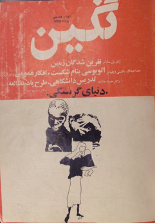
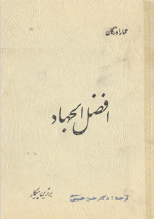
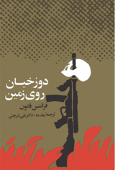
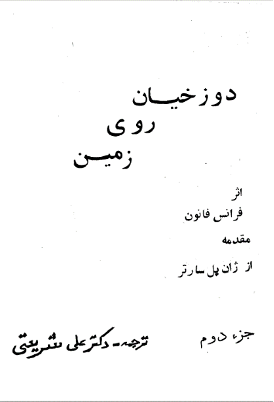
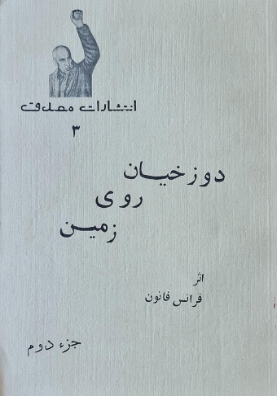
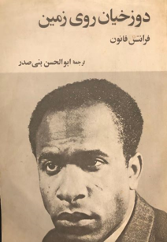
Endnotes
[1] Frantz Fanon, Duzakhiyan ruye zamin, trans. Ali Shariʿati, Introduction by Jean-Paul Sartre ed. (Iran?)., Part 2, 97.
[2] Abolhasan Banisadr, interview by Eskandar Sadeghi-Boroujerdi, 25 July 2020. Banisadr’s claim has also been confirmed by Mohammad Jafari, the former editor of Enqelab-e eslami newspaper, who was a student activist residing in Germany at the time. I have independently verified the date of publication for Part Two. Frantz Fanon, Duzakhiyan ruye zamin (jozʿ dovvom) (Europe: Entesharat-e Mosaddeq, January 1969).
[3] Abolhasan Banisadr, interview by Eskandar Sadeghi-Boroujerdi, 31 July 2020. interview by Zia Sedghi, 21 May 1984., 12.
[4] Ali Rahnema, An Islamic Utopian: A Political Biography of Ali Shariʿati (London: I.B. Tauris, 1998)., 127.
[5] Lotfollah Meisami, “Negahi beh asar-e Fanon dar Iran,” Cheshmandaz-e Iran, no. 77 (Esfand 1391-Farvardin 1392 [March 2013-April 2013]). Meisami appears to be echoing, Sara Shariʿati, an academic sociologist and daughter of Shariʿati, who claims in the same volume of the journal Cheshmandaz-Iran (based on a 2001 lecture originally delivered in French), that Shariʿati translated Sartre’s introduction. No concrete or documentary evidence is provided, and this seems to merely repeat the unsubstantiated claim of the Nilufar Press edition printed in 1982. Sara Shariʿati, “Fanonʾi keh ma mishnasim,” ibid. (Esfand 1391-Farvardin 1392 [March-2013-April 2013]).
[6] Farzaneh Farahzad, “Voice and Visibility: Fanon in the Persian Context,” in Translating Frantz Fanon Across Continents and Languages, ed. Kathryn Batchelor and Sue-Ann Harding (New York & London: Routledge, 2017)., 135..
[7] Alioune Diop et al., Nezhad parasti va farhang, trans. Manuchehr Hezarkhani, 2nd printing ed. (Tehran: Ketab-e zaman, 1348 [1969]).
[8] This partial translation of Sartre’s preface is different from the one found in the various Persian editions of The Wretched of the Earth. It also appears to have been partially censored, removing references to “revolutionary socialism”. Jean-Paul Sartre, “Nefrin shodegan-e zamin,” Negin, no. 17 (October 1966 [Mehr 1345]). “Nefrin shodegan-e zamin,” Negin, no. 18 (November 1966 [Aban1345]).
[9] Farahzad, “Voice and Visibility: Fanon in the Persian Context.”, 134.
[10] Admittedly, On the Service and Treason of the Intellectuals was published posthumously, however, all the articles had been written either in draft form, while some were published prior to Al-e Ahmad’s death in 1969. Al-e Ahmad wrote the first plan for the book in December-January 1963-64 (Dey 1342), and the first draft was completed and distributed between “friends and acquaintances” in the autumn of 1964 (1343). Furthermore, two chapters included in the book were published in 1966 (1345) in the journal Jahan-e now. Jalal Al-e Ahmad, Dar khedmat va khiyanat-e rowshanfekran, vol. 1 (Tehran: Entesharat-e kharazmi, 1357 [1979])., 16.
[11] In his interview with Harvard’s Iranian Oral History Project, Banisadr mentions the first volume of the translation of Fanon’s The Wretched of the Earth, and that he translated it, but does not elaborate any further. Banisadr, “Interview with Abolhasan Banisadr.”, p. 12.
[12] Banisadr himself arrived in Paris in November 1963 and says he purchased the book on Shariʿati’s recommendation in late 1963-early 1964. The process of translating the book would occur later.
[13] According to Banisadr, the book was initially divided up between himself, Mehdi Mozaffari, Mehdi ʿAsgari, and Harati (about which Banisadr was not certain), but they made negligible to no progress. Shariʿati was not involved in this process. Banisadr, “Interview with Abolhasan Banisadr.”
[14] According to Banisadr, he and Hasan Habibi, along with their spouses, would generally type the manuscripts in France and send them to Hamburg for printing, and from Hamburg their colleagues would distribute the books across Europe as well as to Iran. This endeavor received its initial financial support from Dr. Asghar Mahdavi, a university professor and National Front sympathizer based in Iran, and eventually became a self-sustaining operation as it made enough money to cover its running costs. “Interview with Abolhasan Banisadr.”
[15] “Interview with Abolhasan Banisadr.”, p. 12.
[16] Amar Ouzegane, Afzal al-Jihad: bartain paykar (Entesharat-e Mosaddeq, 1973).
[17] Banisadr, “Interview with Abolhasan Banisadr.”
[18] This edition oddly does not acknowledge any translator for the main body of the text or author for the foreword and contends to have “corrected mistakes” in previous editions, while basing itself on an edition published in 1977 (1356) by Talash Press in Ahvaz. Needless to say, this edition is significantly later than the first editions published in Europe. Despite having only typeset the originally typed manuscript Nilufar Press changed little to nothing of actual substance. Those edits and erasures which did take place, however, are quite telling. Frantz Fanon, Duzakhiyan ruye zamin, Translation of Introduction by Ali Shariʿati ed. (Tehran: Entesharat-e Nilufar, Summer 1982).
[19] Rahnema, An Islamic Utopian., 131.
[20] Frantz Fanon, Duzakhiyan ruye zamin, trans. Abolhasan Banisadr (Tehran: Amir Kabir [Entesharat-e Mosaddegh], 1358 [1979]; repr., 3rd). This edition which I have also independently verified is mentioned by Meisami, but without further comment. Meisami, “Negahi beh asar-e Fanon dar Iran.”
[21] For more on the fallout of “Khordad 1360” see, Ervand Abrahamian, Radical Islam: The Iranian Mojahedin (London: I.B.Tauris, 1989).
[22] I am grateful to Behrooz Ghamari-Tabrizi for sharing this SAVAK document with me.
[23] Banisadr, “Interview with Abolhasan Banisadr.”
[24] Farahzad, “Voice and Visibility: Fanon in the Persian Context.”, 143.
[25] Both versions are identical and have been produced with a typewriter and reprinted.
[26] Fanon, Duzakhiyan ruye zamin (jozʿ dovvom)., 7. Fanon, Duzakhiyan ruye zamin., Part 1, 21. Banisadr, “Interview with Abolhasan Banisadr.”
[27] I have reached this conclusion through a close comparison of both editions. Fanon, Duzakhiyan ruye zamin., 21. Fanon, Duzakhiyan ruye zamin., 39. As indicated above, the first edition published in Europe mentions Mosaddeq Press in the foreword, as well as featuring it prominently on its front cover (see. Fig. 5).
